Top 15 Smallest Colleges (But Better) in the U.S Today
 Top 10 Weirdest & Unique Colleges in the US Top 10 Weirdest & Unique Colleges in the US |
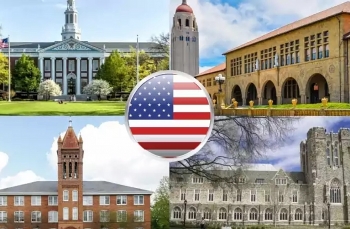 Top 10 Most Largest US Colleges & Universities - by Enrollment, Subscribers Top 10 Most Largest US Colleges & Universities - by Enrollment, Subscribers |
| Table of Contents |
In fact, smaller schools offer a number of advantages not found at larger universities, such as more student-teacher interaction and a more intimate collegiate experience.
What is A Smallest College in the U.S - Deep Springs?
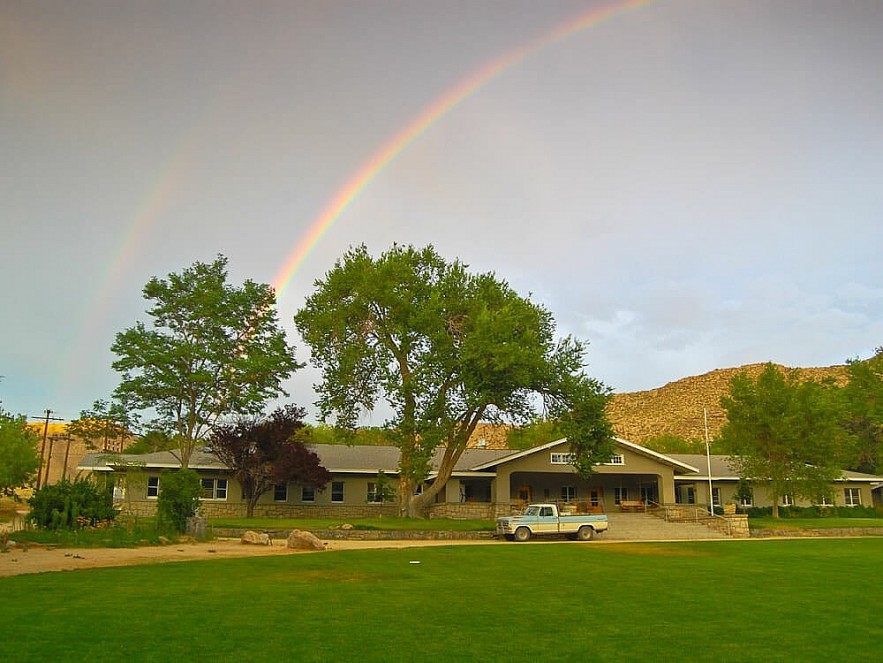 |
| Located between the White and Inyo Mountain ranges in eastern California, Deep Springs Valley is home to our 155-acre campus. |
Deep Springs College, which is situated in Deep Springs, California, is the smallest university in the country.
Deep Springs College is a distinctive higher education organization that was established in 1917. Three pillars—academics, student self-government, and manual labor—support the educational program. On a remote cattle ranch in Deep Springs Valley, forty miles from Bishop, California, is where you'll find the school.
Each year, between 12 and 15 students are accepted. Every applicant who is accepted is given a full scholarship; the college pays their tuition, room, and board. Students at Deep Springs are expected to dedicate their lives to serving others in return. In a variety of fields, including politics, science, journalism, academia, agriculture, medicine, law, business, and design, alumni have gone on to serve as examples of this ideal.
The college has a reputation for being one of the most demanding and rigorous liberal arts colleges in the United States, despite its small size. Deep Springs College's curriculum places a strong emphasis on the liberal arts and includes classes in subjects like science, math, literature, and philosophy.
The college is renowned for emphasizing self-reliance and community service. Every student is expected to put in 20 hours a week on the 2,500-acre ranch run by the college, where they are in charge of maintenance, farming, and animal care. This unconventional, hands-on method of teaching fosters in students a sense of accountability and a solid work ethic.
Deep Springs College is renowned for its small size, distinctive curriculum, and selective admissions procedure. The college has a very competitive admissions process and only accepts a small number of applicants each year. Academic achievement, leadership potential, and a dedication to service are all taken into consideration when selecting students.
The close-knit community that forms between students and faculty at a small university like Deep Springs College is one of its advantages. There are only 12 to 15 or 26 students, so everyone is well acquainted with one another and there is a strong sense of support among the group. Students who are looking for a nurturing environment to help them succeed academically and personally may find particular value in this tight-knit community.
The individualized attention that students receive from their professors at a small university like Deep Springs College is another advantage. Students benefit from one-on-one attention from professors and individualized support in their academic and extracurricular endeavors due to the low student-to-faculty ratio.
Website: www.deepsprings.edu
Top 15+ Smallest Universities in the USA
Some of the best universities in the United States have only a few hundred undergraduates, despite the common perception that any college with fewer than 5,000 students is considered "small." If you're interested in attending one of the ten smallest colleges in the United States, here they are.
1.Deep Springs College
This small, Californian college, which only enrolls 12 to 15 students, is renowned for its demanding academic curriculum and focus on labor and self-governance.
Deep Springs College, despite its small size, has a rich history and a long list of distinguished graduates who have gone on to make important contributions in a wide range of fields. Political figures, business executives, and academics are just a few examples of these alumni.
2. Sterling College in Vermont
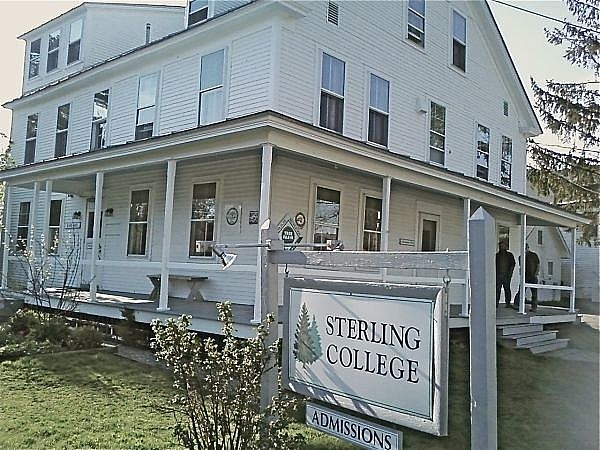 |
| Sterling College in Vermont |
With about 120 students and a focus on giving students a practical education in environmental stewardship and sustainable agriculture, Sterling College is a college in Vermont.
Sterling College in rural Vermont offers two- and four-year undergraduate environmental studies degrees. Our classrooms at the college, which offers a liberal arts education, are the nearby farms, forests, rivers, and wetlands.
In Vermont's Northeast Kingdom, where there are only 125 students enrolled, they cultivate a close-knit community that takes pride in living sustainably and responsibly. At Sterling, we give you the chance to get your hands dirty and learn in a very experiential, hands-on way to get you ready to challenge the status quo.
Where smaller is better: sterling.
Website: www.sterlingcollege.edu
Contact: PO Box 72, 16 Sterling Drive, Craftsbury Common, VT 05827, (802) 586-7711
3. Marlboro College in Vermont
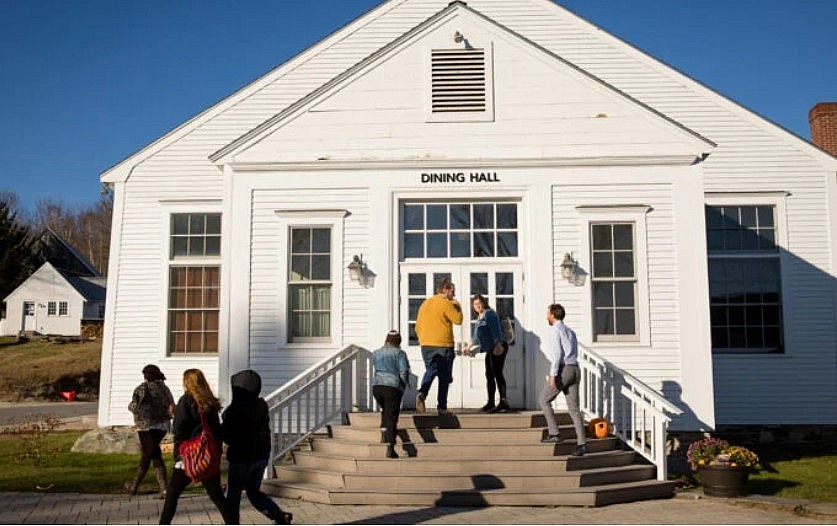 |
| Smallest College in the US: Marlboro Collegein Vermont |
Marlboro College in Vermont, which has a student body of just 200, provides a highly individualized liberal arts education and a distinctive self-designed academic program.
Young intellectuals with diverse career paths were brought together at Marlboro College, where they were given the tools for success—however they chose to define it—and brought together.
The liberal arts college Marlboro College was established in 1946 on the tenet that intelligent, driven students can make their own decisions and create a college experience that is tailored to their individual needs.
Marlboro has always operated under a model of community governance since its inception on a small farm in southern Vermont. Every member of the college community had a voice, whether it was contributing to the cooperative upkeep of the miles of wilderness trails that circled the campus or adding a group tutorial to the semester's course offerings.
The faculty at Marlboro shared knowledge while maintaining high standards for one another. Undergraduates were treated more like colleagues than students, with classes typically having fewer than 10 students.
The conformity and conventional thinking that permeate many educational environments were countered by Marlboro College, an independent, not-for-profit institution with roots in progressive education.
The Marlboro Institute for Liberal Arts and Interdisciplinary Studies was founded in 2020, after Marlboro College struggled for years with declining enrollment figures and rising financial aid costs. The majority of the remaining students and almost all of the tenured and tenure-track faculty moved to Emerson's Boston campus.
Website: marlboro.emerson.edu
College of St. Joseph in Vermont (Closed in March 2019)With a student population of just over 200, this Vermont-based college offers a personalized liberal arts education with a strong emphasis on community service and social justice. |
4. Sweet Briar College
Location: Sweet Briar, VA
Enrollment: 300
U.S. News Ranking: National Liberal Arts Colleges, #154
Acceptance Rate: 50%
This picturesque Virginia school offers female students a private liberal arts education and is named after a rose that grew on the founder's property.
The 40 majors, minors, and certificate programs available to undergraduates include the most popular choices in business, psychology, biology, engineering, and history. Students have access to 45 clubs and organizations and can compete for the Sweet Briar Vixens in varsity sports.
5. Olin College of Engineering in Massachusetts
With about 350 students and a Massachusetts location, Olin College provides an engineering curriculum that is highly specialized and cutting-edge.
Olin College of Engineering is a dynamic, ever-evolving institution that embraces a model of engineering education that is innovative, project-based, and focused on teamwork between faculty and students.
The goal of Olin College of Engineering is to develop cutting-edge, integrated learning experiences, so it abandons conventional structures like departments and tenured faculty.
Olin's faculty are the driving force behind its mission to revolutionize engineering education. They have a variety of experiences that they bring to our students' lives as well as Olin's provocative educational experiment.
Unlike professors in a traditional engineering program, Olin faculty are free to adopt cutting-edge, interdisciplinary teaching methods that are unique to Olin.
Website: www.olin.edu
6. College of the Atlantic – Bar Harbor, Maine
Location: Bar Harbor, Maine
Enrollment: 362
U.S. News Ranking: National Liberal Arts Colleges, #82
Acceptance Rate: 67%
This university in Maine has about 350 students and focuses on human ecology and sustainability in its curricula.
Love the thought of going to college near the water? This roughly 300-student institution, one of the smallest in the United States, aims to "improve the relationships between human beings and our social and natural communities."
The College of the Atlantic emphasizes research and activism in addition to offering a variety of extracurricular activities that make the most of the picturesque setting, like camping, rowing, and sailing.
 Top 10 Most Largest US Colleges & Universities - by Enrollment, Subscribers Top 10 Most Largest US Colleges & Universities - by Enrollment, Subscribers |
7. Thomas Aquinas College
Location: Santa Paula, CA and Northfield, MA
Enrollment: 407
U.S. News Ranking: National Liberal Arts Colleges, #35
Acceptance Rate: 78%
In 2019, this school with the philosopher's name opened a second campus, giving students the option to attend classes on either the left or right coast. Thomas Aquinas College, which offers a Catholic liberal arts education, is renowned for its Great Books curriculum, which exposes students to works by authors like Plato, Aristotle, Cervantes, Pascal, and Hobbes as well as others that have, for better or worse, influenced the development of Western Civilization.
It's not surprising that the university takes the top spot on Kiplinger's Best Value list given that tuition is around $26,000.
8. Soka University of America
Location: Aliso Viejo, CA
Enrollment: 412
U.S. News Ranking: National Liberal Arts Colleges, #27
Acceptance Rate: 39%
This California university, which is conveniently located halfway between San Diego and Los Angeles, is renowned for having the highest endowment per student of any university in the country. The 400 undergraduate students at the institution, in contrast to most colleges, will all pursue a BA in Liberal Arts with a focus in Environmental Studies, Humanities, International Studies, Life Sciences, or Social and Behavioral Sciences.
Coursework for each concentration includes lectures from various academic disciplines and cultures. Additionally, junior year junior year junior year study abroad for one semester is a requirement of the curriculum and is paid for by tuition. The objective is to prepare students to be global citizens who are driven to improve the world.
9. Alaska Pacific University
Location: Anchorage, AK
Enrollment: 500 - 750
U.S. News Ranking: Regional Universities West, #82
Acceptance Rate: 86%
With just over 500 students, Alaska Pacific University provides a specialized education with an emphasis on social sciences, outdoor leadership, and environmental studies.
This Alaskan college, which has a stunning campus surrounded by trees and is only a few miles from Downtown Anchorage, aspires to preserve the history of the native people who once inhabited the area. In fact, the school offers a number of majors with this focus, including marine and environmental sciences, outdoor studies, and sustainability studies. Additionally, students have easy access to the Anchorage Trail system's walking and biking trails as well as extracurricular pursuits like kayaking, ice climbing, and skiing.
10. Goshen College in Indiana
This Indiana-based college, which enrolls about 800 students, is well-known for its robust music, nursing, and peace studies curricula.
In Indiana, Goshen College is a highly regarded institution that serves Hispanic students. It is known for its integrated and purposeful curriculum, its unique hands-on learning opportunities, and its dedication to making the world a better place.
The college's 135-acre campus in the City of Goshen is home to 950 students, including more than 40% who identify as students of color or from nations other than the United States. In addition to the best-in-class graduate programs in nursing, business administration, environmental education, and social work, it offers more than 65 undergraduate study options.
Goshen College, which was recognized by Washington Monthly as the top bachelor's college in Indiana and was included in the Princeton Review's list of greenest colleges, takes pride in offering a comprehensive education that combines the arts with the sciences and the theoretical with the practical, exposing students to a range of viewpoints and inspiring them to reflect deeply and live intentionally.
Goshen students graduate prepared to thrive in their lives and careers, as well as to make significant and measurable contributions to their communities and interpersonal relationships. 98% of graduates start their careers or pursue further education within a year of graduation.
Website: www.goshen.edu
11. Harvey Mudd College
Location: Claremont, CA
Enrollment: 844
U.S. News Ranking: National Liberal Arts Colleges, #23
Acceptance Rate: 14%
This smaller Claremont Colleges institution, with fewer than 1,000 students, is well-known for its science and engineering programs. This implies that students may enroll in courses at six additional institutions, including Scripps and Pomona College.
The average class size is under 20 students, and there are many extracurricular activities available to students. Harvey Mudd College students are unlikely to get bored while pursuing their degrees because Los Angeles is only an hour away from campus.
Hampshire CollegeHampshire College in Massachusetts, with a student body of around 1,200, provides a flexible and individualized education with a focus on social justice and environmental sustainability. |
12. Cooper Union for the Advancement of Science and Art
Location: New York City
Enrollment: 854
U.S. News Ranking: Regional Colleges North, #1
AcceptanceRate: 16%
The Cooper Union for the Advancement of Science and Art, also known as Cooper Union, offers students the chance to study right in the middle of New York City. Three schools, each specializing in architecture, art, or engineering, make up this East Village college.
However, the Faculty of Humanities and Social Sciences will provide all students with their required core courses. A wide range of extracurricular activities are available at the institution, including performance groups, Greek organizations, and professional societies.
13. Wabash College
Location: Crawfordsville, IN
Enrollment: 862
U.S. News Ranking: National Liberal Arts Colleges, #53
Acceptance Rate: 65%
Wabash College has been instructing young people since the 1830s. It is one of only three men's liberal arts colleges in the United States. Economic, biological, and political science are the most popular majors at the institution, which places a strong emphasis on academics.
At this Indiana university, sports are also well-liked; in fact, almost 40% of undergrads participate in varsity athletics, and 80% play intramural or club sports.
14. California Institute of Technology
Location: Pasadena, CA
Enrollment: 961
U.S. News Ranking: National Universities, #12
Acceptance Rate: 9%
One of the top research universities in the world is Caltech, another university in California. The school offers a variety of science and engineering programs, with top majors including computer and information sciences and math and statistics, and boasts 22 Nobel Laureates among its alumni network.
But students also take time away from their studies to participate in extracurricular activities. Popular choices include the Students for the Exploration and Development of Space and the Caltech Biotech Club.
15. Scripps College
Location: Claremont, CA
Enrollment: 990
U.S. News Ranking: National Liberal Arts Colleges, #33
Acceptance Rate: 24%
This Claremont institution, another women's college, annually enrolls fewer than 1,000 undergraduate students. The Scripps campus has the distinction of being one of the most stunning colleges in the United States and is listed on the National Register of Historic Places.
Similar to Harvey Mudd, Scripps is a part of the Claremont Colleges consortium, giving students the opportunity to further their education by taking classes at nearby institutions. The most well-liked majors are in political science, psychology, and biology.
Small Colleges: Pros and ConsPros The academic advantages that smaller schools provide are among the main reasons that students choose to enroll there. Students benefit from closer relationships with teachers and classmates at small colleges because these institutions frequently have similar small class sizes. You may even be able to create your own curriculum in some circumstances with the help of your professors. A more intimate, interactive learning environment is the end result. Attending a small school gives you the benefit of always running into friendly faces. A smaller school might make you feel more at ease right away if you're nervous about living away from home for the first time. Cons Although there are many benefits to smaller schools, there are also some disadvantages. Small colleges typically have fewer resources and extracurriculars due to their size. In other words, your small school might not have the frat you wanted to pledge to or the chess club you wanted to join. Additionally, many small schools lack specialized majors or pre-professional tracks of study, such as education, engineering, or anatomy and physiology. You should research smaller colleges before submitting an application to make sure they offer the academic and extracurricular opportunities you're looking for. Having said that, small colleges can be excellent for those preparing for careers in medicine, law, or graduate study. This is because smaller classes give you a better chance of getting a deeper undergraduate education and a closer relationship with your professors, which frequently results in stellar recommendation letters. |
In conclusion
The college may be small, but its graduates have made big impacts in many fields, so it has a strong reputation for academic excellence.
Deep Springs College, Sterling College in Vermont, Olin College of Engineering in Massachusetts, and many others like them are great options if you're looking for a small student body and individualized attention from your teachers.
 Top 10 Most Prestigious Schools for Police in the U.S 2023/2024 Top 10 Most Prestigious Schools for Police in the U.S 2023/2024 Though it can be a dangerous and stressful job, many American children dream of becoming police officers one day. |
 Top 20 Most Prestigious Schools for Esthetician And Skin Care in the US Top 20 Most Prestigious Schools for Esthetician And Skin Care in the US In the US, if you want to become an esthetician, a skin care specialist, or a facialist, you must take short or long-term courses to ... |
 Top 25 Most Prestigious Culinary Schools in the U.S Today Top 25 Most Prestigious Culinary Schools in the U.S Today In the modern American kitchen, a formal culinary education is essential for advancement to the position of executive chef. Viewing our mouthwatering ranking of the ... |
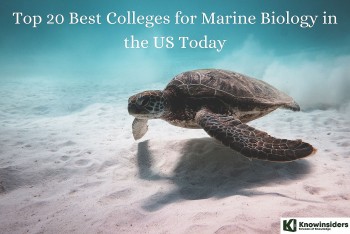 Top 20 Most Prestigious Colleges for Marine Biology in the US 2023/2024 Top 20 Most Prestigious Colleges for Marine Biology in the US 2023/2024 More students are looking for the best colleges in marine biology, and here are the top 20 best schools in the United States to consider ... |























